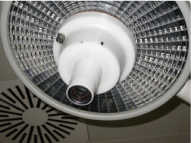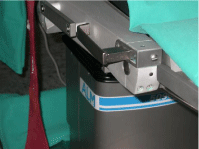
Editorial
Austin Plastic Surg Open Access. 2018; 1(1): 1003.
Operating Room Safety
Abenavoli FM*
Department of Plastic Surgery “San Pietro” Hospital, Fatebenefratelli, Italy
*Corresponding author: Fabio Massimo Abenavoli, Department of Plastic Surgery “San Pietro” Hospital, Fatebenefratelli, Italy
Received: March 22, 2018; Accepted: November 20, 2018; Published: November 27, 2018
Keywords
Operating Room; Safety
Editorial
Numerous are the rules and guidelines [1-4] that govern everything concerning the operating room and the equipment arranged within. For every area, specific rules exist that control the position of the appliance and ventilation, there are safety regulations for the electric outlets and all waste removal. To reduce the ambient concentration of waste anesthetic agents, exhaust gas scavenging systems are standard in almost all operating rooms.
There are also properly very strict rules that defend the safety of the patients [5] but little seems to exist to protect the workers and especially the surgeons, who continuously and uninterruptedly work with in the operating rooms. There are various examples that confirm such a consideration, which is testified by all the colleagues that constantly report accidents having occurred in the operating room, both during surgical operations and independently of them.
From an analysis of the equipment, carts and everything that is usually present within the surgical center, it is then understood how many more accidents really might be potentially possible. In the forefront, is the scialytic lamp, for example, not normally covered by any material adequate to cushion those traumas that frequently happen by banging the head, especially during special operations requiring a rather low position of the lamp (Figure 1). Another source of frequent trauma is represented by the presence of those carts used, for example, to keep drugs, some instruments, etc., that often don’t have any protection around the corners, causing consequently a contusive trauma in the case of direct contact.

Figure 1: The “dangerous” handle of the scialytic lamp.
The edge of the surgical table itself represent, in many cases, a danger because of the raised margins; the arm rest, for example, has an irregular surface with which we easily come into contact while we operate (Figure 2). The constant contact is a cause of continuous trauma and thus possible injury. Also in this case, therefore, as in the preceding examples indicated and photographed (Figure 2), a protection with suitable material would be sufficient in order to reduce the incidence and the consequences deriving from direct traumatism with such areas. Such precautions exist in all working environments, being obvious for the defense of security and safety of the workers.

Figure 2: The “dangerous” edge of the surgical table.
Therefore, a policy of protection and prevention would be advisable also for the surgeons and all the medical, nurses and theatre staff, that regularity work long hours in the operating room and so, preoccupied most of the time with the concern for the clinical case to which they are dedicated, are, unfortunately, not mentally prepared to take responsibility for the problems also connected with their safety. Few stratagems, really, would be necessary, such as protection from the jutting regions of the appliances and carts and covering of the lamps with soft material, etc., in order to guarantee a better quality of life even within the operating rooms.
It is already unnatural that most operating rooms are in closed environments and where the sunlight cannot come in, bringing about quite an abnormal condition for the operating room workers, such as to make them lose awareness of the time that goes by and cause a condition of loss of contact with the surrounding reality. This, together with the absolute concentration that everyone has for the surgical event itself, in the end, may also be cause of distraction and lowering of the attention level for everything else.
References
- Undre S, Sevdalis N, Healey AN, Darzi SA, Vincent CA. Teamwork in the operating theatre: Cohesion or confusion? J Eval Clin Pract. 2006; 12: 182-189.
- Flin R, Yule S, McKenzie L, Paterson-Brown S, Maran N. Attitudes to teamwork and safety in the operating theatre. Surgeon. 2006; 4: 145-151.
- Espin S, Levinson W, Regehr G, Baker GR, Lingard L. Error or "act of God"? A study of patients' and operating room team members' perceptions of error definition, reporting, and disclosure. Surgery. 2006; 139: 6-14.
- McDonald R, Waring J, Harrison S, Walshe K, Boaden R. Rules and guidelines in clinical practice: A qualitative study in operating theatres of doctors' and nurses' views. Qual Saf Health Care. 2005; 14: 290-294.
- Christian CK, Gustafson ML, Roth EM, Sheridan TB, Gandhi TK, Dwyer K, et al. A prospective study of patient safety in the operating room. Surgery. 2006; 139: 159-173.